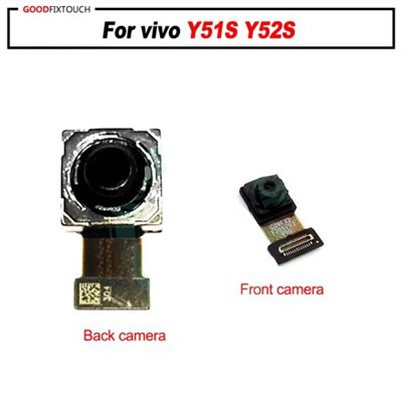Touch ID Vs Face ID: A Comprehensive Comparison
Leave a message
In the world of Apple devices, Touch ID and Face ID are two popular biometric authentication methods. Let's explore their differences in various aspects.
1. Identification Methods
Touch ID
Touch ID, introduced in 2013 with the iPhone 5s, is a fingerprint - based identification system. It's integrated into the home button (or power button in some models like iPhone SE 3rd generation). Users simply place their finger on the designated button, and the device reads their fingerprint.
Face ID
Face ID made its debut in 2017 with the iPhone X. It uses a TrueDepth camera system to map the user's face. When you look at your device, over 30,000 invisible dots are projected onto your face, creating a detailed facial map that the device uses for identification.
2. Working Principles
Touch ID
The sensor uses advanced capacitive touch technology. When your finger touches the sensor, it measures the electrical charge differences between the ridges and valleys of your fingerprint. This data is then converted into a mathematical representation. The fingerprint data is stored securely in the device's Secure Enclave, and only a mathematical template is used for comparison, not the actual fingerprint image.
Face ID
The dot projector in the TrueDepth camera system projects the dots onto your face. The flood illuminator helps detect your face even in low - light conditions. The infrared camera then captures the pattern of these dots on your face. This data is sent to the neural network, which turns it into a mathematical representation. When you try to unlock your device, the current facial data is compared with the stored template in the Secure Enclave.
3. Usage Scenarios
Touch ID
It's great when your hands are free. You can quickly place your finger on the button without having to look at the device. For example, if you're holding a bag in one hand and your phone in the other, it's easy to use Touch ID. However, if your fingers are wet, dirty, or injured, the recognition accuracy may decrease.
Face ID
Face ID is convenient when your hands are occupied. You can unlock your phone just by looking at it, like when you're carrying groceries or using both hands to type on a keyboard. But it may not work well if your face is covered, such as when wearing a mask (although some newer models have improved mask - recognition capabilities), sunglasses that block the infrared sensors, or in extreme lighting conditions.
4. Security
Touch ID
Apple claims the chance of someone unlocking your device with a false fingerprint is about 1 in 50,000. The fingerprint data is encrypted and stored in the Secure Enclave, isolated from the rest of the device's system and apps. Each Touch ID sensor is paired with a specific processor, adding an extra layer of security.
Face ID
Apple states that the probability of a random person being able to unlock your device using Face ID is 1 in 1,000,000. It also has an attention - aware feature, which means the device won't unlock unless your eyes are open and you're looking at it. Facial data is encrypted and stored in the Secure Enclave, and it's difficult to replicate a 3D face model to fool the system.
5. Lifespan
Touch ID
The Touch ID sensor, being a physical component that is frequently touched, may be subject to wear and tear over time. However, Apple uses durable materials like scratch - resistant sapphire glass to protect the sensor. In normal usage, it can last for the lifespan of the device. But if the device is dropped or exposed to extreme conditions, the sensor might get damaged.
Face ID
Face ID has multiple components in the TrueDepth camera system. These components are less likely to be physically damaged by normal use since they are not directly touched. However, environmental factors like dust or moisture could potentially affect the performance of the infrared camera or other sensors over a long period. But overall, in normal conditions, they are also designed to last for the device's lifespan.
6. Models They Appear In
Touch ID
iPhone models with Touch ID include iPhone 5s, iPhone SE (1st, 2nd, and 3rd generation), iPhone 6 series, iPhone 6s series, iPhone 7 series, iPhone 8 series. Some iPad models like iPad Pro, iPad mini (3rd - 6th generation), iPad (5th - 6th generation), and iPad Air 2 also have Touch ID.
Face ID
Face ID is available in iPhone models starting from iPhone X, including iPhone XS series, iPhone XR, iPhone 11 series, iPhone 12 series, iPhone 13 series, iPhone 14 series, iPhone 15 series, and iPhone 16 series. In the iPad lineup, some iPad Pro models support Face ID.
7. Advantages and Disadvantages
Touch ID
Advantages:
Fast and easy to use when your hands are in a normal condition.
Works well in any lighting conditions.
Can be used without looking at the device.
Disadvantages:
Affected by wet, dirty, or injured fingers.
If the home button (where Touch ID is integrated) is damaged, it may impact the fingerprint recognition function.
Face ID
Advantages:
Hands - free operation, very convenient in many situations.
High - security level with a low false - positive rate.
Can adapt to some facial changes like growing a beard or wearing glasses.
Disadvantages:
Can be affected by face coverings like masks or certain types of sunglasses.
May have issues in extreme lighting conditions.
Less accurate for twins or very young children.
In conclusion, both Touch ID and Face ID offer great security and convenience, and the choice between them often depends on personal preference and usage scenarios.







